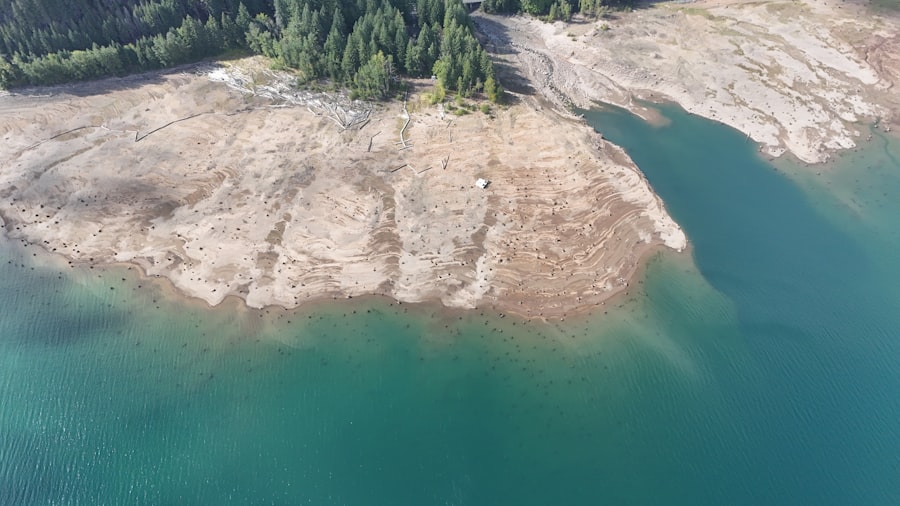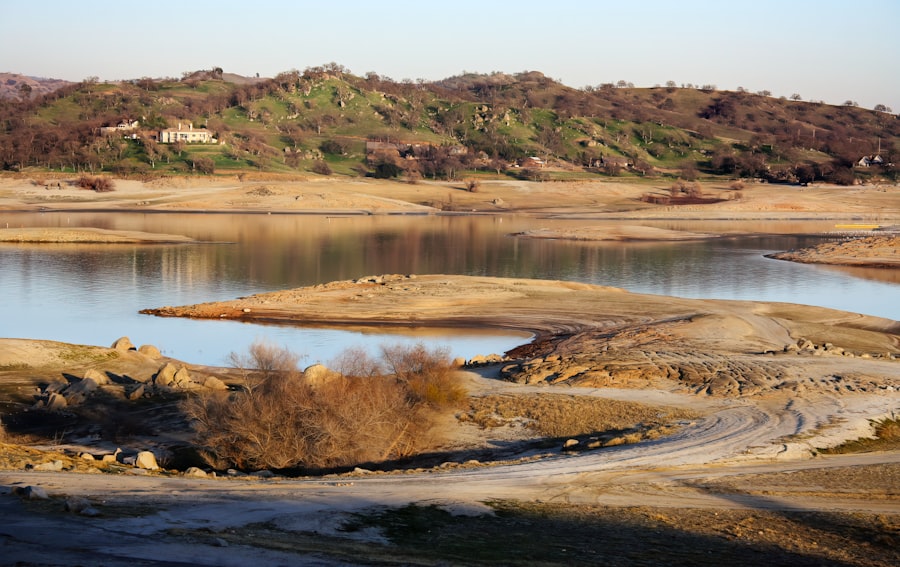Water is an essential component of life, serving as the foundation for human existence and the functioning of ecosystems. It is not merely a resource; it is a vital element that sustains health, supports agriculture, and drives economic activities. Every day, individuals rely on water for drinking, cooking, cleaning, and sanitation.
The human body itself is composed of approximately 60% water, underscoring its critical role in maintaining bodily functions such as temperature regulation, nutrient transportation, and waste elimination. Without adequate access to clean water, the basic needs of individuals and communities cannot be met, leading to dire consequences. Moreover, water plays a significant role in social and cultural practices.
It is often associated with rituals, traditions, and community gatherings. In many cultures, water symbolizes life and purity, making it integral to various ceremonies and celebrations. The importance of water extends beyond mere survival; it fosters social cohesion and enhances the quality of life.
As such, understanding the multifaceted role of water in everyday life is crucial for recognizing its value and the need for sustainable management practices.
Key Takeaways
- Water is essential for everyday life, from drinking and cooking to sanitation and hygiene.
- Water scarcity can lead to health issues and poor hygiene practices, impacting communities and individuals.
- Agriculture and food production heavily rely on water, and scarcity can lead to food shortages and price hikes.
- The water crisis has a significant impact on the environment, leading to ecosystem degradation and loss of biodiversity.
- Water shortages can have severe economic consequences, affecting industries, livelihoods, and overall development.
The Impact of Water Scarcity on Health and Hygiene
Water scarcity poses a significant threat to public health and hygiene, particularly in regions where access to clean water is limited. When communities lack sufficient water supplies, they are forced to rely on contaminated sources, leading to the spread of waterborne diseases such as cholera, dysentery, and typhoid fever. These illnesses disproportionately affect vulnerable populations, including children and the elderly, resulting in increased morbidity and mortality rates.
The absence of clean water also hampers proper sanitation practices, further exacerbating health risks. In addition to direct health impacts, water scarcity can lead to psychological stress and social instability. Individuals living in water-scarce areas often experience anxiety over the availability of this essential resource, which can affect their overall well-being.
Furthermore, the burden of collecting water often falls on women and children, limiting their opportunities for education and economic participation. The interplay between water scarcity and health highlights the urgent need for comprehensive strategies to ensure access to clean water and promote hygiene practices in affected communities.
The Role of Water in Agriculture and Food Production

Water is a cornerstone of agriculture and food production, serving as a critical input for crop growth and livestock rearing. Irrigation systems rely heavily on water availability to ensure that crops receive adequate moisture throughout their growth cycles. In regions where rainfall is insufficient or unpredictable, farmers depend on irrigation to sustain their livelihoods and meet food demands.
The relationship between water and agriculture is particularly evident in arid and semi-arid regions, where efficient water management practices are essential for maximizing agricultural productivity. However, the increasing pressures of climate change and population growth are straining water resources, posing challenges for food security. As demand for food rises, so does the competition for limited water supplies among agricultural, industrial, and domestic users.
This competition can lead to over-extraction of water resources, resulting in soil degradation and reduced agricultural yields. To address these challenges, innovative approaches such as sustainable irrigation techniques and drought-resistant crop varieties are being explored to enhance water efficiency in agriculture while ensuring food security for future generations.
Water Crisis and its Effect on the Environment
| Metrics | Data |
|---|---|
| Number of people affected by water crisis | 2.2 billion |
| Percentage of global population facing water scarcity | 40% |
| Reduction in agricultural productivity due to water scarcity | 20-40% |
| Loss of biodiversity in water-stressed regions | 30% |
| Percentage of global wetlands lost due to water crisis | 50% |
The global water crisis has far-reaching implications for the environment, affecting ecosystems and biodiversity. Over-extraction of freshwater resources can lead to the depletion of rivers, lakes, and aquifers, disrupting natural habitats and threatening aquatic species. Wetlands, which serve as vital ecosystems for numerous plants and animals, are particularly vulnerable to changes in water availability.
The loss of these ecosystems not only diminishes biodiversity but also reduces the natural services they provide, such as flood regulation and carbon sequestration. Furthermore, pollution from agricultural runoff, industrial discharges, and untreated sewage exacerbates the environmental impact of the water crisis. Contaminated water bodies can lead to the degradation of aquatic ecosystems, harming fish populations and other wildlife.
The interplay between water scarcity and environmental health underscores the need for integrated water resource management that considers ecological sustainability alongside human needs. Protecting water resources is not only essential for human survival but also for preserving the planet’s biodiversity and ecological balance.
The Economic Consequences of Water Shortages
Water shortages have significant economic repercussions that extend beyond immediate impacts on individuals and communities. Industries reliant on water—such as agriculture, manufacturing, and energy production—face increased operational costs due to limited supplies. Reduced agricultural output can lead to higher food prices, affecting consumers’ purchasing power and overall economic stability.
Additionally, businesses may experience disruptions in production processes due to inadequate water availability, leading to decreased productivity and potential job losses. The economic consequences of water scarcity also manifest in increased healthcare costs associated with treating waterborne diseases and other health issues stemming from poor sanitation. Governments may find themselves allocating more resources to address these challenges rather than investing in infrastructure or development projects that could stimulate economic growth.
As such, addressing water scarcity is not only a matter of social justice but also an economic imperative that requires coordinated efforts from various stakeholders.
Access to Clean Drinking Water: A Basic Human Right

Access to clean drinking water is recognized as a fundamental human right by international organizations such as the United Nations. This recognition underscores the moral obligation to ensure that all individuals have access to safe and sufficient water supplies for their basic needs. However, millions of people around the world still lack reliable access to clean drinking water, leading to severe health disparities and social inequalities.
The right to water encompasses not only physical access but also affordability, quality, and availability. Ensuring access to clean drinking water requires a multifaceted approach that addresses systemic barriers such as poverty, infrastructure deficits, and governance issues. Community engagement is crucial in identifying local needs and developing sustainable solutions that empower individuals to take ownership of their water resources.
By prioritizing access to clean drinking water as a basic human right, societies can work towards achieving greater equity and improving overall public health outcomes.
Innovative Solutions to Address Water Scarcity
In response to the growing challenges posed by water scarcity, innovative solutions are emerging that aim to enhance water management practices and improve efficiency. Technologies such as desalination—converting seawater into freshwater—are being explored as potential solutions for regions facing acute freshwater shortages. While desalination presents its own set of challenges related to energy consumption and environmental impact, advancements in technology are making it increasingly viable.
Additionally, rainwater harvesting systems are gaining popularity as a sustainable method for capturing and storing rainwater for domestic use. These systems can significantly reduce reliance on traditional water sources while promoting self-sufficiency within communities. Furthermore, smart irrigation technologies that utilize sensors and data analytics are helping farmers optimize their water usage by delivering precise amounts of moisture based on real-time conditions.
By embracing innovative approaches to water management, societies can work towards mitigating the impacts of scarcity while promoting sustainability.
The Role of Government and Policy in Water Management
Effective governance and policy frameworks are essential for addressing the complex challenges associated with water management. Governments play a crucial role in establishing regulations that promote sustainable use of water resources while ensuring equitable access for all citizens. Comprehensive policies should encompass various aspects of water management—including allocation, conservation, pollution control, and infrastructure development—to create a holistic approach that addresses both current needs and future challenges.
Collaboration among different levels of government—local, regional, and national—is vital for implementing effective water management strategies. Engaging stakeholders from various sectors—including agriculture, industry, environmental organizations, and local communities—can foster a more inclusive decision-making process that reflects diverse perspectives and priorities. By prioritizing sound governance practices in water management policies, governments can work towards achieving long-term sustainability while safeguarding this precious resource for future generations.
Community Efforts to Conserve and Protect Water Resources
Community involvement is a powerful force in conserving and protecting water resources at the local level. Grassroots initiatives often emerge in response to specific challenges faced by communities regarding water access or quality.
By fostering a sense of ownership over local water resources, communities can drive meaningful change that contributes to broader sustainability goals. Moreover, community-led conservation projects can serve as models for collaboration between residents and local governments or organizations. Such partnerships can enhance resource management efforts by pooling knowledge and resources while empowering individuals to take action within their own neighborhoods.
By harnessing collective action at the community level, societies can create resilient systems that prioritize conservation while addressing immediate needs related to water scarcity.
The Global Perspective on Water Crisis and International Cooperation
The global nature of the water crisis necessitates international cooperation to address shared challenges effectively.
Collaborative efforts among nations are essential for developing comprehensive strategies that promote sustainable management practices while ensuring equitable access to clean water.
International organizations play a pivotal role in facilitating dialogue among countries regarding transboundary water management issues. Treaties governing shared river basins or aquifers can help mitigate conflicts while promoting cooperative approaches to resource allocation. Additionally, knowledge sharing through global networks allows countries facing similar challenges to learn from one another’s experiences—fostering innovation while building resilience against future crises.
The Future of Water: Challenges and Opportunities
Looking ahead, the future of water presents both challenges and opportunities that require proactive engagement from all sectors of society. Climate change continues to pose significant threats to freshwater availability through altered precipitation patterns and increased evaporation rates. As populations grow and urbanization accelerates, demand for clean water will only intensify—making it imperative for societies to adopt sustainable practices now.
However, these challenges also present opportunities for innovation in technology, governance models, and community engagement strategies aimed at enhancing resilience against future crises. By prioritizing sustainable development goals related to clean water access while fostering collaboration among stakeholders at all levels—from local communities to international organizations—societies can work towards creating a more equitable future where everyone has access to this vital resource. In conclusion, addressing the multifaceted issues surrounding water scarcity requires a comprehensive understanding of its importance in everyday life as well as its implications for health, agriculture, the environment, economy, human rights, governance policies—and ultimately our collective future on this planet.
Through innovative solutions driven by community engagement alongside effective government policies aimed at sustainable management practices—we can strive towards ensuring that clean drinking water remains accessible not just today but well into tomorrow’s generations too.
When considering the dire consequences of water scarcity, it’s crucial to explore the broader implications on both the environment and human societies. An insightful article that delves into these issues can be found on MyGeoQuest. This piece discusses the multifaceted challenges that arise when water resources become depleted, including the impact on agriculture, urban areas, and natural ecosystems. For a deeper understanding of these pressing concerns, you can read the full article by visiting this link. It provides a comprehensive overview of the potential scenarios and strategies for mitigating the effects of water shortages.
WATCH NOW! Why America’s Heartland Is Disappearing Fast
FAQs
What are the consequences of water running out?
When water runs out, it can lead to severe droughts, crop failures, and food shortages. It can also result in a lack of clean drinking water, which can lead to waterborne diseases and health issues.
How does water scarcity affect the environment?
Water scarcity can lead to the depletion of natural ecosystems, loss of biodiversity, and desertification. It can also result in the degradation of water quality and the destruction of aquatic habitats.
What are the economic impacts of water scarcity?
Water scarcity can lead to increased costs for agriculture, industry, and households. It can also result in reduced economic productivity, loss of jobs, and increased poverty in affected regions.
How does water scarcity affect human health?
Water scarcity can lead to inadequate sanitation and hygiene, which can result in the spread of waterborne diseases such as cholera, typhoid, and dysentery. It can also lead to malnutrition and dehydration.
What are some solutions to address water scarcity?
Some solutions to address water scarcity include water conservation measures, investment in water infrastructure, improved agricultural practices, and the development of alternative water sources such as desalination and water recycling. Additionally, better water management and governance can help to ensure equitable access to water for all.
